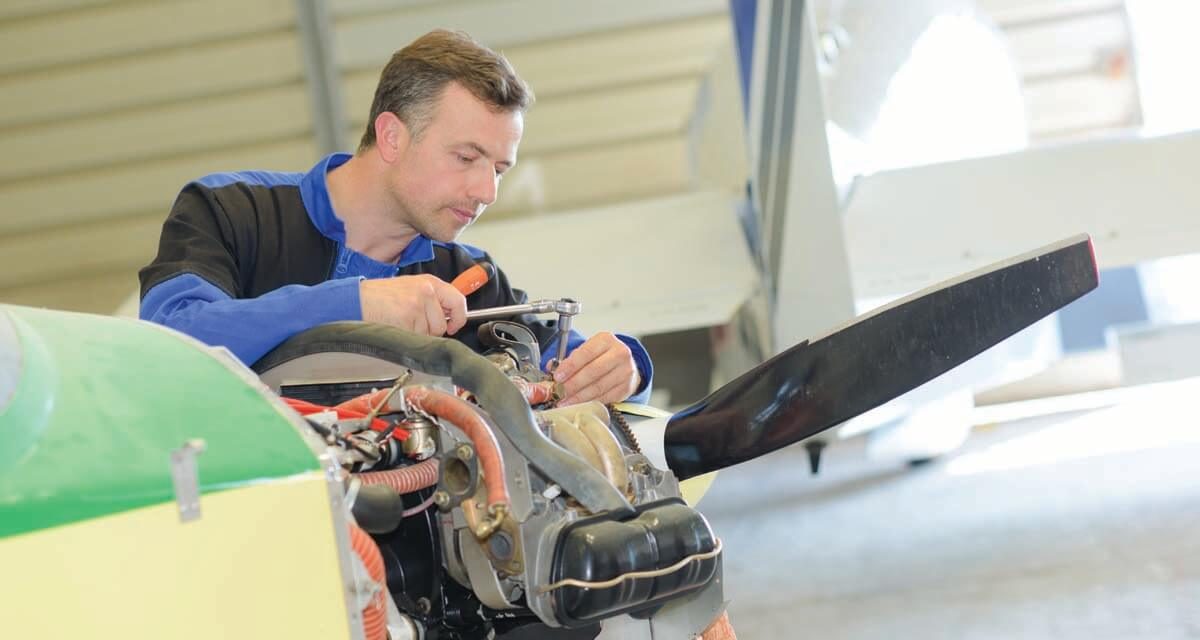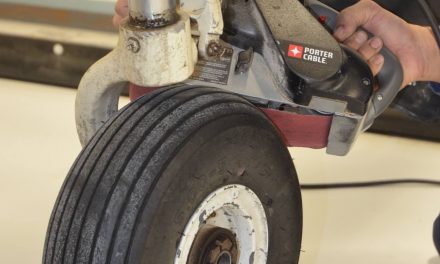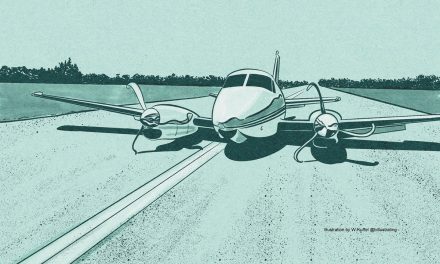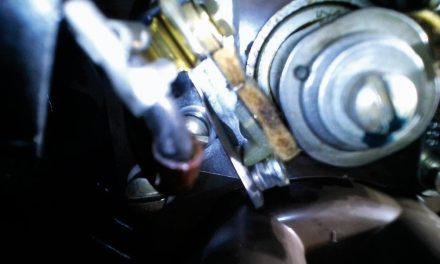I think most can agree that this has been quite a unique winter. Some pilots did not fly because of weather, some because of the restrictions around the country, and some because, well, they just didn’t have anywhere to go. Many of our customers just flew a few hours around the pattern to keep the dust from settling too deep on the wings.
Looking forward, many pilots and owners have a lot of missing logbook hours to make up for. And really, what’s the old line, “any flying hours are better than no flying hours.”
So, I hope you have been able to keep that new year’s resolution you undoubtedly made — to fly more hours.
Flying more is not just a good thing from the insurance side but I have always believed that the more hours you fly the less maintenance your aircraft will need.
Let me try and explain my view. Yes, flying an aircraft a lot of hours can put more wear and tear on the aircraft, therefore potentially causing more maintenance needs. But as I have mentioned before, even though aircraft have to keep up with scheduled maintenance such as service bulletins, ADs, and annual inspections, that doesn’t mean they shouldn’t also be maintained every day.
I’m talking more than checking the oil, kicking the tires, and lighting the fires. I’m thinking of the IRAN version of everyday. IRAN meaning inspect and repair as necessary. In this case it is not based on how much you fly, but on what your aircraft needs to have in the way of repairs.
I believe the more we fly the better it is for the aircraft. Every long-term-parked or “abandoned” aircraft that I have bought has cost more money to get and keep airworthy than the ones that were flown regularly. Whether it was rust in the engines, dried out gaskets, or sticky pulleys, infrequent use causes issues that result in costly maintenance.
Here are a few ideas about getting ready to put in those hundreds of flight hours over the rest of the year.
Regular preventive maintenance
As we have discussed before, as an aircraft owner you can take your airplane to the local shop and have a mechanic repair whatever needs to be fixed. Although this is good for the shop and the local economy, it is not always good for one’s pocketbook. We all know that we would be in big trouble if we lost our local mechanics, but sometimes it’s easier (and cheaper) to do some of the preventive maintenance items ourselves. FAR 43.13 lists the things that an owner can do within the context of preventive maintenance (read Sky’s article on Owner Maintenance). The list is quite extensive and includes topics like oil changes, proper safety wiring, and what you can and cannot paint — as long as it’s not an airworthiness item or function. For example, you cannot strip and paint the elevator because it needs to be balanced, but you can paint the struts. Get the idea? So, check out FAR 43.13 Section G to decide what items you feel comfortable doing. Owner maintenance does make you more comfortable with your aircraft. But don’t try and tackle things you are not going to be able to handle because of experience or tool requirements. Some things are better left to a professional mechanic.
Paperwork
Keep your paperwork in order. Paperwork is your registration, airworthiness, appropriate logbooks (engine, airframe, propeller, etc.), and your personal logbooks. I mention the registration because it has come up several times with our customers that the aircraft’s FAA registration and airworthiness has expired or is in the wrong name. While that might not affect you immediately, it could — usually when there is an accident or incident.
It can also be an issue if you have an ex-partner or spouse whose name is on the registration. We actually had an owner wreck his aircraft and his ex-wife called wanting her half of the money. They had been divorced for years, but he never removed her from the FAA registration, and she was able to use that registration to establish an ownership in the aircraft.
Do you have your aircraft registered in an LLC? Remember, I am not a legal adviser, so talk to your lawyer, but if you are the sole member of the LLC and you do not treat the LLC like an LLC (filing minutes, notes, maintenance of the LLC, and whatever else is required in your state) you might be wasting your time with the LLC. Make sure you are treating the LLC like an LLC. The LLC is not the “cure all” for liability protection many people think it is, so it is important to get professional advice for your individual situation. On a side note, the insurance rates do not change if the aircraft is in an LLC, corporation, partnership, or owned solely by an individual.
Get and keep your pilot logbooks up to date. I do not know how many high-time professional pilots tell us “I just don’t log flights anymore; I have tens of thousands of hours and I don’t need to worry about getting more.” That may be true. Unless you have insurance.
Insurance
If you have insurance, in the event of a claim, the claims department will ask for logbooks from the pilot and the aircraft. If there are few, if any, recent hours listed for the pilot it can create issues for the settlement. So, if paper logs are tough to keep up, sign up for an electronic version. Whatever version you use, it’s important to record the hours, flight reviews, approaches, etc. All I am really saying is keep logging your hours, even if you have tens of thousands of them already.
When you renew your insurance, updated hours are critical to get the best rates and, in some cases, even getting a renewal quote. We have had a couple companies decline to offer renewal quotes until they received updated pilot information. To sum up the logbook issue: details, details, details!
If you want to start the year off right, make sure the aircraft looks good and everything works but also make sure all the paperwork (logbooks, registrations, insurance) is in order. Make sure you are ready and get out there and fly!
If your aircraft is registered and insured in a form of ownership other than individual (LLC, partnership, etc.) note that any settlement checks will be written to the named insured. Recently we had a situation where the check was written to the named insured (an LLC), but the LLC did not have a checking account to deposit the check into. Their bank would not let them endorse the check written to the LLC over to an individual person. So, take some time this spring to just make sure you are set up correctly for your situation.
One last thing. Last year we missed out on air shows — SUN ’n FUN, AirVenture, etc. But hopefully this year they will be back on. As I am writing this they are still on schedule, but who knows for sure. Events like SUN ’n FUN and AirVenture are a great way to see a lot of businesses and experts in one location. They’re a great place to not only shop for avionics, engines, and parts for any aircraft project you might be planning, but also to get some advice on maintaining your aircraft regularly.






